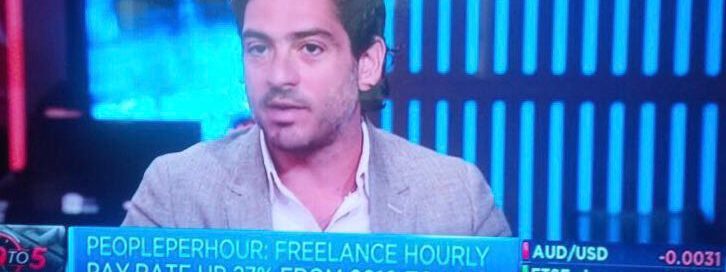The future of marketplaces
Marketplaces are some of the hardest businesses to build (as our own testimony at PeoplePerHour shows). They are complex beasts with lots of moving parts, the parts need constant tweaking and polishing, and the sum of the parts – when they are put together properly – is greater than the whole (the ‘network effect’). It takes a lot of hard work, analysis, creativity and most of all persistence to get to what’s commonly called ‘critical mass’. But once you do marketplaces are some of the most defensible and beautiful businesses.
If you’ve read the latest Malcolm Gladwell book What the Dog Saw (another masterpiece of his) there’s a chapter on ‘The Ketchup Conundrum’ which addresses the question of: why has the monopoly once held by French’s mustard been broken whilst that of Heinz ketchup hasn’t? In that chapter he refers to something called ‘umami’ which apparently is one of our five human palates (along with salty, sweet, sour and bitter). Umami is the thing that blends it all together so that the sum of the parts just works. In other words: you could deconstruct ketchup into its ingredients and put it back (or Coke for that matter) fairly easily (in fact they are listed on the label!). What’s hard is to get the umami right.
As with food consumer taste is getting more sophisticated over time. So the umami needs to keep up with it. There are many more condiments and food products today to evolve umami to suit people’s evolving taste buds. And similarly there are more tools today than ever to do the same for marketplaces to serve people’s growing demands. What began as nothing more complex than listings sent to people via email (the origins of Craigslist), evolved to be two-sided listings (‘wants’ and ‘offers’) online called Classifieds, which later evolved to be ‘community marketplaces’ with richer profiling, online reputation systems (the eBay franchise), and later social integration (the Airbnb franchise). Today we are witnessing the next step change.
This I believe is the beginning of Marketplaces 3.0. Rich profiling and social integration which no more than a few years ago was pure genius is no longer enough. Those are great features that serve discovery – giving customers the tools and date to make more informed decisions. In the era we are entering people want the exact opposite: to NOT make a decision at all. They want the smart box in the middle to do it form them.
The best example of this is Uber. Uber’s genius extends far beyond letting you book a taxi. Its the black box in the middle that sets the right price to match supply and demand in real time (as we all know from the infamous price hikes), and route the most relevant, available cab near you with a satisfactory quality rating. You don’t interview your taxi driver, or negotiate prices (a notorious albeit fun experience for anyone who’s taken a ‘mini cab’ in London on a late Saturday evening!). Nor do you have a choice to compare. It’s just done for you.
This ‘Uberized’ experience will be the next evolution of marketplaces. The platform in the middle which today connects the two sides to any marketplace will evolve to become an ‘end to end’ experience with the software in the middle taking a lot more decisions on the customers’ behalf. We are moving from light software with liquidity being the name of the game, to deeper software with liquidity as a feature.
There is a clear trade off: standardization and convenience Vs. flexibility and diversity. So for the more arcane and ‘long tail’ inventories that the applications serves this may be harder and will require much deeper technologies, leveraging the power of big data to make sense of the chaos in the middle. For more commoditized categories like a taxi ride it will take off much faster.
This is why at PeoplePerHour we launched SuperTasker: an Uberized marketplace for (initially) a few digital services categories that are easier to ‘packet’ and standardize. We are an end-to-end experience much like in the Uber analogy: we deploy the data and information we have from over 600,000 profiles on the platform and hundreds of thousands of completed jobs, to take out all the decisions the customer needs to take in a classic two-sided marketplace: the ‘who’ (or what), the ‘how much’ and the ‘when’ . The customer simply selects a task and the ‘black box’ in the middle does the rest.
For now SuperTasker is focused on small tasks that are easier to standardize, like design edits and production of digital content in highly common formats (banners, infographics, logos, standard article formats etc). But the vision is to deploy the leanings from that to many more categories to scale it. Not surprisingly Uber is expanding brilliantly into categories outside cabs, leveraging the technology and logistical backbone to do increasingly many more things (I got ice cream delivered to me in Miami recently via Uber! Brilliant)
No doubt this new paradigm shift will (sooner than we can imagine) get disrupted again by a fourth (or fifth depending on where you start the count) evolution to marketplace models. What that will be is still uncertain. But technology has shown again and again that is is not without a sense of irony. One era’s fad is the next eras nemesis. So automation and de-personalization may well loop back to a more advanced and mature version of what we have today.

















Hey would you mind letting me know which web host you’re utilizing?
I’ve loaded your blog in 3 completely different internet browsers and I must say this
blog loads a lot quicker then most. Can you recommend a good web hosting provider at a fair
price? Thank you, I appreciate it!